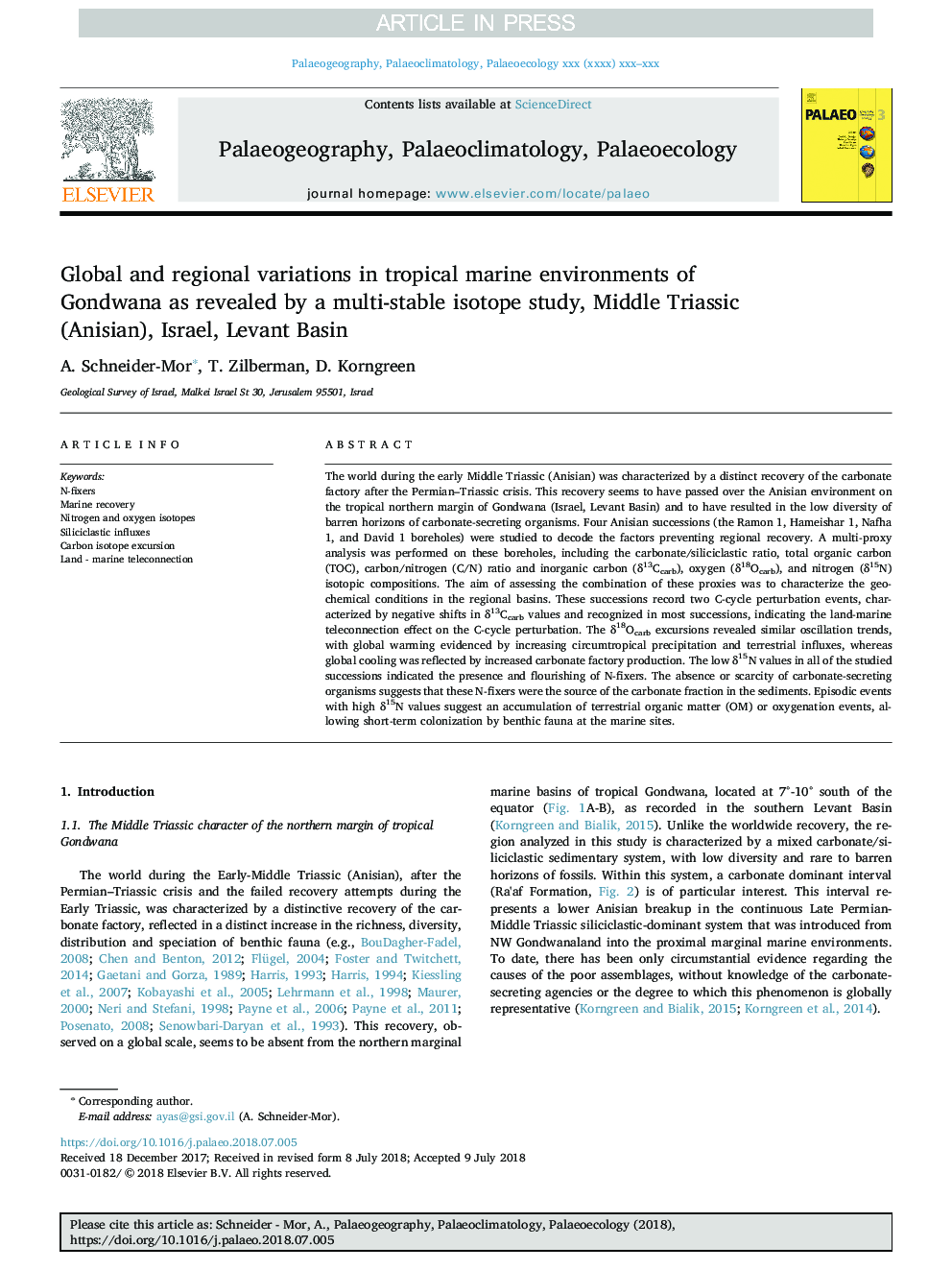| کد مقاله | کد نشریه | سال انتشار | مقاله انگلیسی | نسخه تمام متن |
|---|---|---|---|---|
| 8868082 | 1622085 | 2018 | 14 صفحه PDF | دانلود رایگان |
عنوان انگلیسی مقاله ISI
Global and regional variations in tropical marine environments of Gondwana as revealed by a multi-stable isotope study, Middle Triassic (Anisian), Israel, Levant Basin
دانلود مقاله + سفارش ترجمه
دانلود مقاله ISI انگلیسی
رایگان برای ایرانیان
موضوعات مرتبط
مهندسی و علوم پایه
علوم زمین و سیارات
فرآیندهای سطح زمین
پیش نمایش صفحه اول مقاله

چکیده انگلیسی
The world during the early Middle Triassic (Anisian) was characterized by a distinct recovery of the carbonate factory after the Permian-Triassic crisis. This recovery seems to have passed over the Anisian environment on the tropical northern margin of Gondwana (Israel, Levant Basin) and to have resulted in the low diversity of barren horizons of carbonate-secreting organisms. Four Anisian successions (the Ramon 1, Hameishar 1, Nafha 1, and David 1 boreholes) were studied to decode the factors preventing regional recovery. A multi-proxy analysis was performed on these boreholes, including the carbonate/siliciclastic ratio, total organic carbon (TOC), carbon/nitrogen (C/N) ratio and inorganic carbon (δ13Ccarb), oxygen (δ18Ocarb), and nitrogen (δ15N) isotopic compositions. The aim of assessing the combination of these proxies was to characterize the geochemical conditions in the regional basins. These successions record two C-cycle perturbation events, characterized by negative shifts in δ13Ccarb values and recognized in most successions, indicating the land-marine teleconnection effect on the C-cycle perturbation. The δ18Ocarb excursions revealed similar oscillation trends, with global warming evidenced by increasing circumtropical precipitation and terrestrial influxes, whereas global cooling was reflected by increased carbonate factory production. The low δ15N values in all of the studied successions indicated the presence and flourishing of N-fixers. The absence or scarcity of carbonate-secreting organisms suggests that these N-fixers were the source of the carbonate fraction in the sediments. Episodic events with high δ15N values suggest an accumulation of terrestrial organic matter (OM) or oxygenation events, allowing short-term colonization by benthic fauna at the marine sites.
ناشر
Database: Elsevier - ScienceDirect (ساینس دایرکت)
Journal: Palaeogeography, Palaeoclimatology, Palaeoecology - Volume 507, 15 October 2018, Pages 115-128
Journal: Palaeogeography, Palaeoclimatology, Palaeoecology - Volume 507, 15 October 2018, Pages 115-128
نویسندگان
A. Schneider-Mor, T. Zilberman, D. Korngreen,